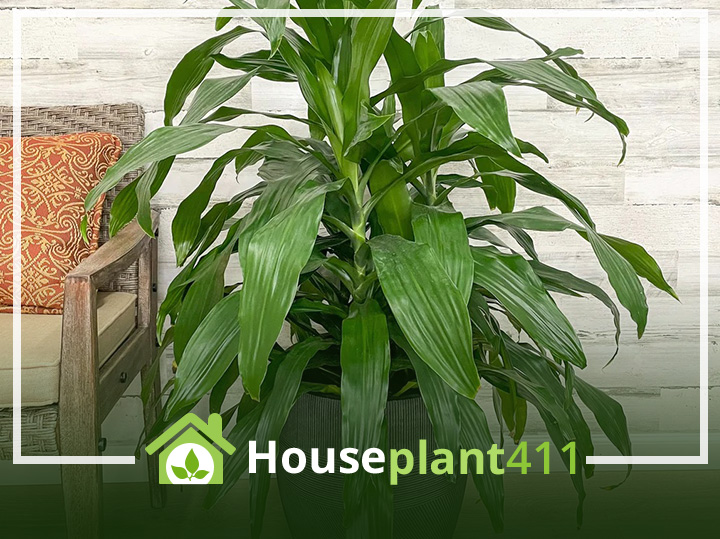About
A Dracaena fragrans “Janet Craig,” previously known as a Dracaena deremensis “Janet Craig,” is native to tropical Africa; and in nature, can grow as tall as 49ft (15m). The slow growing, easy- care Dracaena janet craig is one of the most popular large houseplants used in homes and offices. It grows well in all light conditions, from low light to bright indirect light, and is very forgiving if you forget to water. This is a very forgiving plant that adapts to almost all growing conditions. Some other members of the Dracaena fragrans family include the Dracaena Warnekii, the Dracaena Corn Plant, the Dracaena Reflexa, the Dracaena Compacta, the Dracaena Sanderiana, and the Dracaena Lemon Lime
Dracaena Janet Craig Description
Dracaena janet craig plants have sword- shaped, leathery, shiny dark green leaves that can be as large as 3” (7.6cm) wide and 10”- 20” (25cm – 50.8cm) long. When small, a Dracaena janet craig looks good sitting on a table, desk, or counter; later, as the plant matures, it can be used as a stately floor plant, either in bush or tree form. When purchasing a large Dracaena janet craig, look for one that has at least 3-5 stalks at different heights; this helps ensure that the plant will stay bushy and full as it matures. If growing conditions are ideal, a Dracaena janet craig may produce tall, 10″-12″ (25.4cm- 30.48cm) stalks with large, heavily scented, white flowers. Although this is fun to see, the flowers produce a messy, sticky sap that gets on the floor, carpets, and nearby furniture. The flowers also slow down new leaf development and can even distort the attractive shape of the plant. I like to cut them off as soon as they start to appear.
Dracaena Janet Craig Varieties and Relatives
Dracaena Janet Craig “Compacta” has thick green stems with several clumps of short, dark green, pointed leaves
Dracaena Janet Craig “Lisa” has narrow green leaves and is virtually indestructible; it is more expensive than the regular Dracaena janet craig.
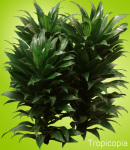
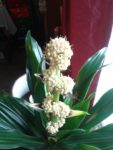

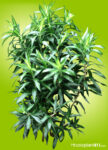
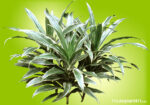
Dr. JC Compacta Dr. JC Flowers Dr. JC Lisa Dr. Reflexa Dr. Warnekii
Quick Care Tips for a Dracaena Janet Craig
Direct sun burns the leaves and causes ugly brown marks or bleached spots
Too much fertilizer or using fluorinated, chlorinated, or salty water causes leaf tip burn
Re-pot when the roots have filled the existing pot. These plants like to be snug in the pot.
A Dracaena janet craig is a stalk plant; bottom leaves turning yellow and dropping off is natural.
Over-watering is the main reason a Dracaena janet craig dies
Conclusion
A Dracaena janet craig is a tough plant that thrives on neglect, grows slowly even in low light, and forgives you if you forget to water. It’s the perfect plant for someone missing a “green thumb” or a novice to caring for houseplants. Just remember not to kill the plant with kindness.
All dracaena plants, are slightly poisonous, especially to dogs and cats. Read more about common houseplants that are poisonous to dogs, cats, and small children in Don’t Feed Me to Your Cat: A Guide to Poisonous Houseplants.
Plant Care
Light
A Dracaena janet craig will grow slowly in low light, but grows much faster in medium to bright indirect light. When the light is extremely low, new leaves are smaller and narrower. Placing a Dracaena janet craig in the direct sun for even a few minutes, burns the leaves.
Water
When in doubt, do not water a Dracaena janet craig! Allow the top 50% of the soil to dry out before watering. The lower the light, the less often a dracaena needs water. Fluoride, chlorine, or salt in the water causes brown leaf tips and yellow spots on the leaves.
Fertilizer
Dracaena plants need very little fertilizer. Feed once or twice a year, in the spring and summer, with a balanced plant food diluted to 1/2 the recommended strength. Too much plant food causes leaf tip burn.
Temperature
A Dracaena janet craig prefers temperatures above 55°F (12.8°C). Cold winter drafts and blowing heaters damage the leaves.
Humidity
Basic household humidity is sufficient.
Flowering
If the growing conditions are right, a Dracaena janet craig may produce tall flower stalks with large, fragrant, white flowers. The flowers often slow down leaf production, ruin the shape of the plant, and secrete a messy, sticky sap that gets all over the plant, the floor,and furniture. I recommend cutting the flowers off as soon as they appear.
Pests
Mealy bugs and scale are the main plant pests that can be a problem. Spray with the non-toxic Green Solution (recipe in the Glossary) and then carefully wipe the leaves. This removes dust buildup as well as the plant pests.
Diseases
Leaf Spot is the main plant disease problem. The attacking fungus or bacteria causes brown spots trimmed in yellow where it is feeding on the leaves. Read more about Leaf Spot disease and how to identify and treat it, in the Glossary of the website.
Soil
Use a loose soil that drains quickly for a Dracaena janet craig. In Hawaii, dracaenas are often grown and shipped to plant stores in lava rock. If you purchase a dracaena growing in lava rock, remove at least 1/3 of the rock and replace it with potting soil.
Pot Size
A Dracaena janet craig likes to be root bound so don’t rush to re-pot. Any new container should be only one size larger than the current pot and must have drip holes in the bottom.
Pruning
A spindly or bare stemmed dracaena janet craig should be pruned during the spring and early summer. Cut off the top part of a cane anywhere along the stalk; new leaves develop directly below the cut. The pruned section can be used to start a new plant.
Propagation
Dracaena janet craig cuttings do root in water. However, the preferred method is to use a 5″-8″ cane cutting. Note which end of the cutting is the top and which is the bottom so you can plant it in the right direction. Allow the cane cutting to sit out overnight so the cut end can dry out. Plant the cane cutting in a small pot of moist, very fine potting soil, and place the pot in indirect light. If, over time, the soil seems very dry, water slightly. In about 3-4 weeks the cuttings should root and new leaves begin to develop.
Clean Air Plant
NASA lists a Dracaena janet craig as a clean air plant.
Poisonous Plant Info
A Dracaena janet craig is sometimes listed as a non-poisonous houseplant; however, some pets, especially cats and dogs, have experienced problems after eating the leaves. My advice, keep all dracaenas away from your pets.
FAQ
That’s a hard question to answer since it depends on the light in the room. A Dracaena Janet Craig plants grow very slowly in low light, but grow much faster in bright indirect light. Always allow some space between the ceiling and the plant for growth.
You can trim the leaves of your Dracaena Janet Craig using very sharp, wet, scissors. Using wet scissors helps prevent the cut edges of the plant leaves from turning yellow. Brown tips on Dracaenas usually indicate too much salt build-up in the soil due to over-fertilizing or too much fluoride or chlorine in your water. Dracaenas need very little plant food, feed only in the spring and summer not in the fall or winter. Never use water that has passed through a softener, it’s too salty.
If your Dracaena janet craig is too tall, cut the stalks back to whatever height you want. Think about the shape of the tree before you do any pruning because the plant will branch out, developing two or three new “heads” below each cut. You can dip the ends of the cane pieces you remove in a small amount of Rooting Hormone. Plant three or four of these stem pieces in potting soil to propagate a new plant.
Although the flowers on a Dracaena janet craig have a lovely fragrance, they present a couple of problems. The flower and its stalk often ruin the shape of the plant. As the Dracaena flower matures, it secretes a sticky, messy sap that gets on the plant leaves, floor, and anything else that’s nearby. I recommend removing Dracaena flowers sooner rather than later.

